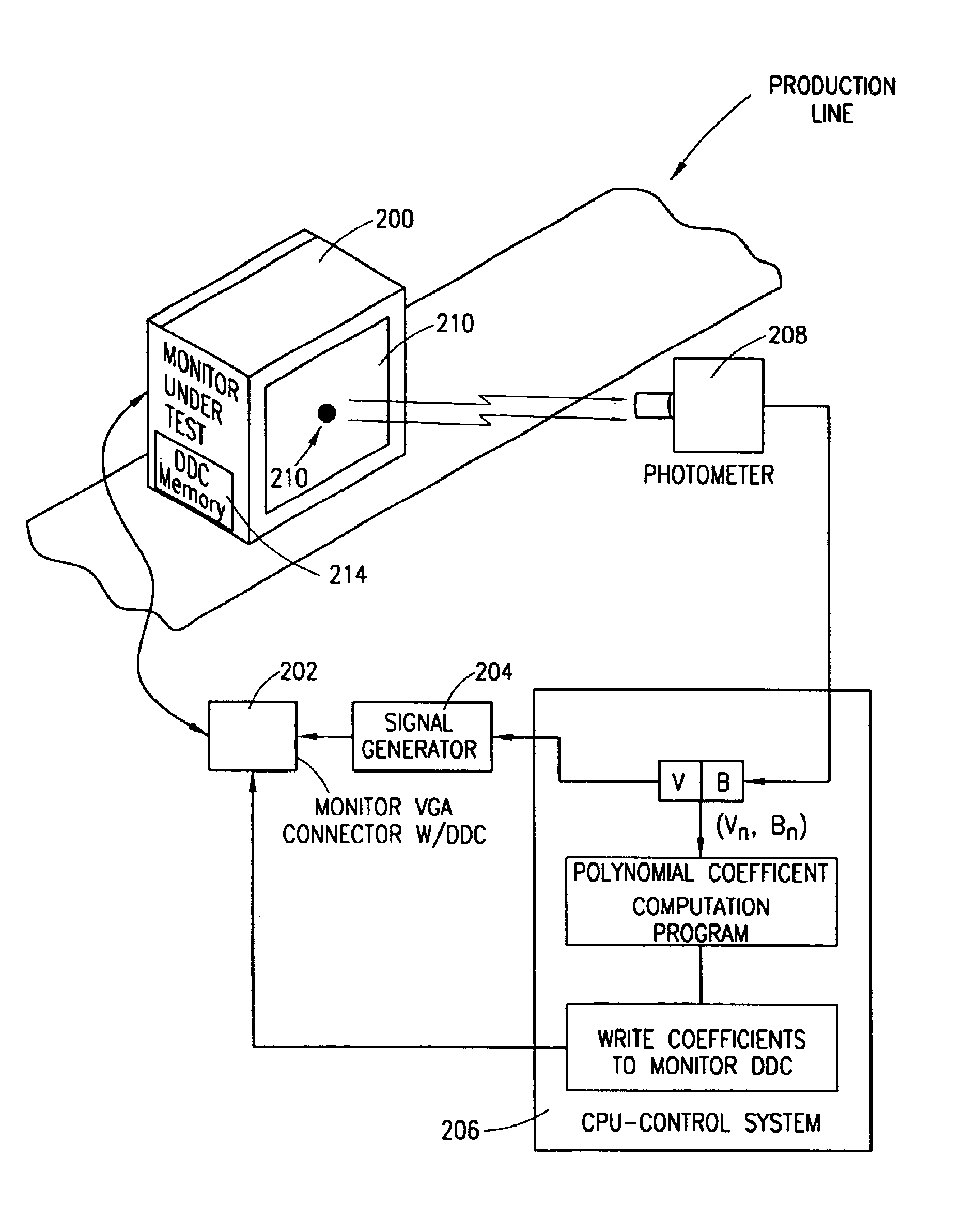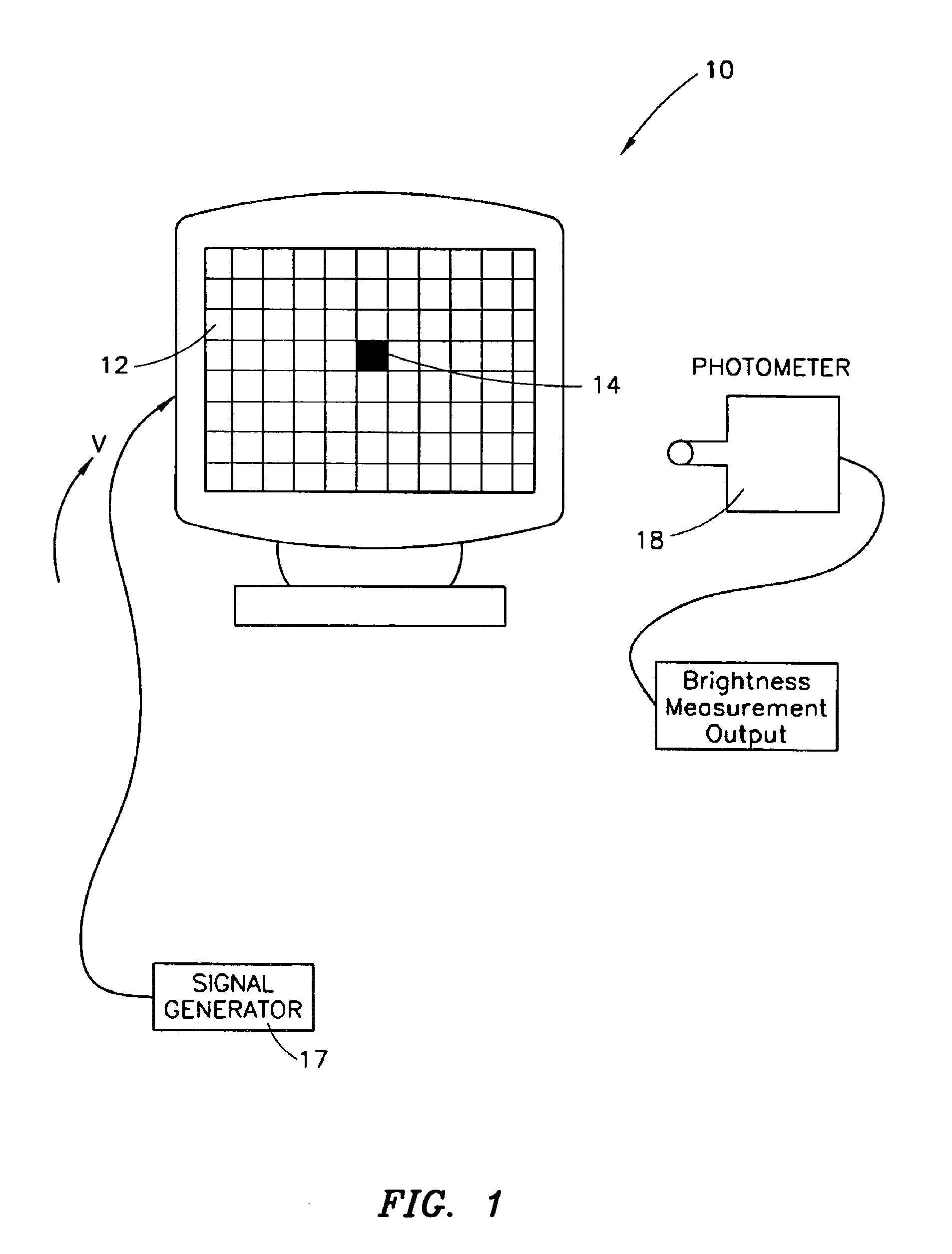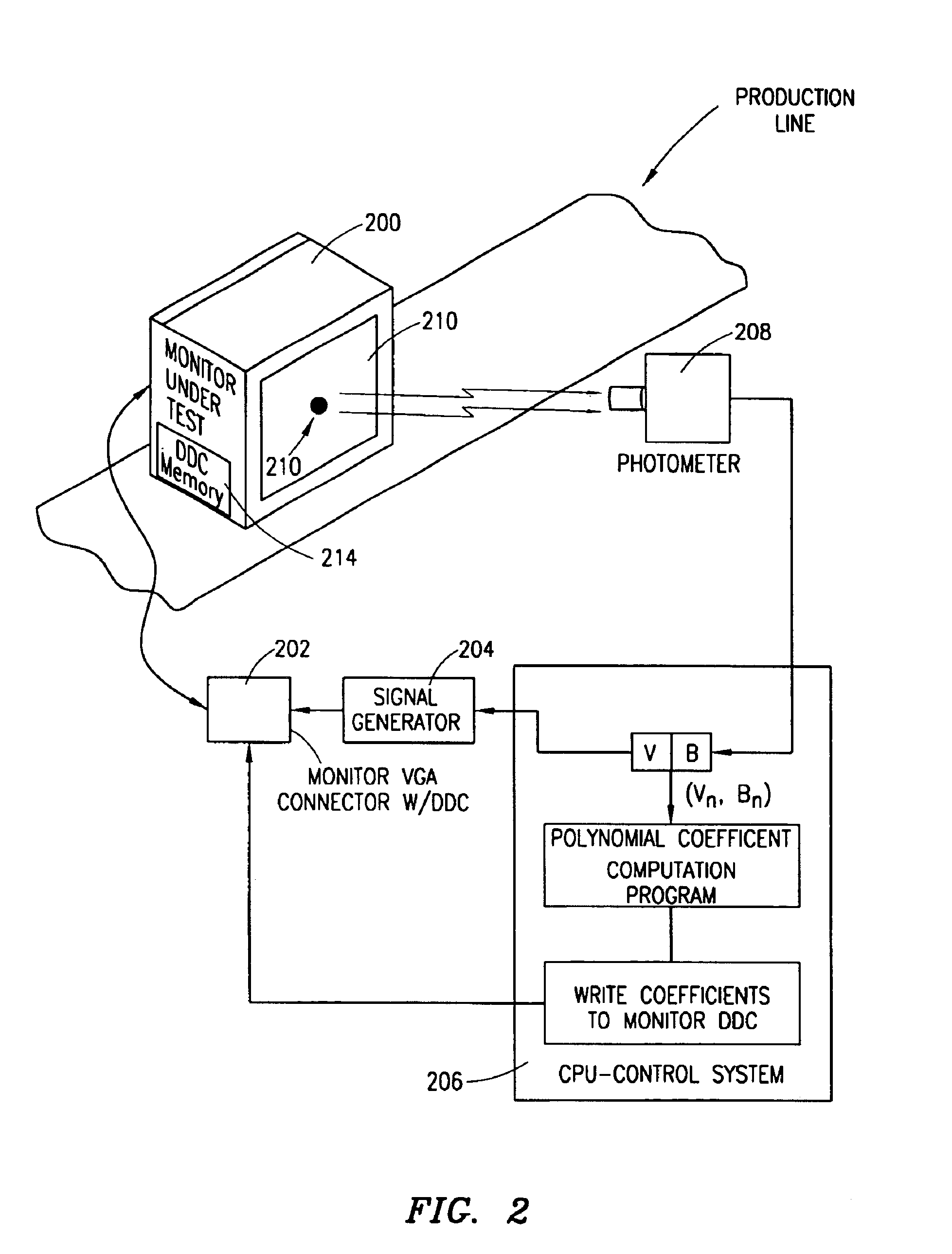Color display system
a color display and monitor technology, applied in the field of color monitors and displays, can solve the problems of inaccurate gamma function, inability to view the correct color of clothing, and inability to accurately match the color of clothing, etc., and achieve the effect of high color fidelity
- Summary
- Abstract
- Description
- Claims
- Application Information
AI Technical Summary
Benefits of technology
Problems solved by technology
Method used
Image
Examples
Embodiment Construction
An exemplary embodiment of the present invention prescribes a method for establishing a transfer function, and preferably, a third order polynomial that describes a relationship between an input to a color monitor and the resulting color brightness of the monitor for each color red, green and blue. In essence, a polynomial representation of the input-output characteristics of a color display device is established.
Referring to FIG. 1, a CRT 10 is depicted. It is noted that this method can be used for substantially any display device. Such display devices include, but are not limited to, color display devices, VGA flat panel NCDs or SPVs, LCD, reflective LCD, and FED display devices. Regardless, of the type of color display device 0, a video signal (or its equivalent) is inputted into the color display device (CDD) 10 and a pattern is outputted on the CDD's screen. A grid or plurality of pixels 12 make up the displayed pattern. A pixel is a picture element or an addressable element wi...
PUM
 Login to View More
Login to View More Abstract
Description
Claims
Application Information
 Login to View More
Login to View More - R&D
- Intellectual Property
- Life Sciences
- Materials
- Tech Scout
- Unparalleled Data Quality
- Higher Quality Content
- 60% Fewer Hallucinations
Browse by: Latest US Patents, China's latest patents, Technical Efficacy Thesaurus, Application Domain, Technology Topic, Popular Technical Reports.
© 2025 PatSnap. All rights reserved.Legal|Privacy policy|Modern Slavery Act Transparency Statement|Sitemap|About US| Contact US: help@patsnap.com



